Installing Aviatrix Edge OS Using USB
This topic provides instructions for installing the Aviatrix Edge OS on Dell hardware using USB.
If Edge OS is installed using iDRAC and an ISO file, then we recommend that you use the virtual media functions offered by the remote console to configure a static IP on the device. For details, see Installing Aviatrix Edge OS Using iDRAC Remote Console and ISO.
1. Prerequisites
-
Before you start to onboard and install the Edge OS on the edge device, make sure these prerequisite steps are completed.
-
Download and install a software on your laptop which you can use to Flash an OS to a USB drive or SD card, like balenaEtcher - Flash OS images to SD cards & USB drives.
2. Prepare a USB Installer with Aviatrix Edge OS
Prepare a USB installer with Aviatrix Edge OS.
-
Download the latest Aviatrix Edge OS from Aviatrix Support.
-
Connect a USB drive to a laptop.
-
Open Balena Etcher
-
Select the Aviatrix Edge OS image
-
Select the USB drive
-
Flash
-
The USB installer is ready to use.
3. Onboard Edge Device onto Aviatrix Edge Platform
Onboard the edge device onto the Aviatrix Edge Platform.
-
In Aviatrix CoPilot, go to Cloud Fabric > Hybrid Cloud > Devices tab.
-
Click Onboard Device, then provide the following information.
Field
Description
Name
A name to identify the edge device.
Platform
The Aviatrix Edge Platform Account where to onboard the device.
Device Configuration
Dell HW with single ethernet controller for Edge Spoke Gateway, select:
-
DELL Poweredge 1x E810
Dell HW with two ethernet controller for Edge Spoke or Transit Gateway, select:
-
DELL Poweredge 2x E810
Serial Number
The serial number of the edge device.
-
-
Expand Device Interface Configuration and configure the device’s Function MGMT (Management) interface.
-
If you plan to use DHCP for the device Management interface, turn DHCP toggle to On.
-
If you plan to configure a Static IP address for the device Management interface, leave DHCP toggle to Off.
-
If DHCP is Off, enter the Static IP address for the Management interface.
Field
Description
Interface CIDR
The Static IP address of the Management interface.
Gateway IP
The Management Default Gateway IP address.
Primary DNS
The primary DNS server IP address.
Secondary DNS
(Optional) The secondary DNS server IP address.
-
If you are using a proxy server to route internet traffic, from Proxy Profile dropdown menu, select the profile to upload to the edge device.
-
-
Under Advanced, specify the Edge Management CIDR that will be used on the Edge gateway interface. If a CIDR is not specified, the system auto assigns 10.100.101.0/24 CIDR range and assigns 10.100.101.2 IP address on the interface.
If the auto assigned CIDR is used, ensure that this range does not overlap with any other network. 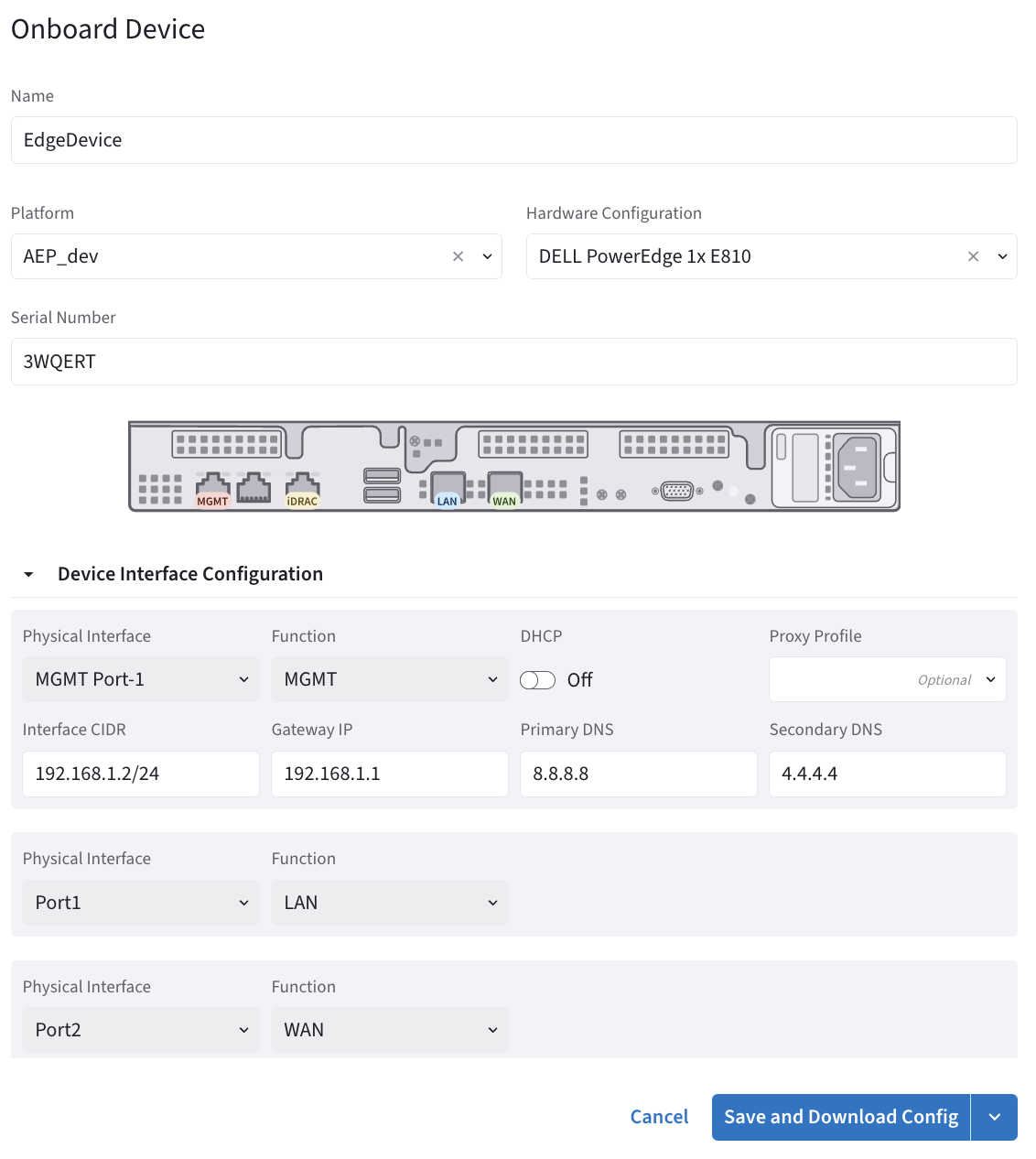
-
Save the configuration.
-
When DHCP is selected for MGMT interface, click Save.
-
When Static IP is selected for MGMT interface, from the Save and Download Config drop-down menu, click Save.
This will download a bootstrap-config.img file (for example, 3QDDWX3-bootstrap-config.img). Your device will show up as Provisioned in Copilot.

-
-
Connect a USB drive to your laptop.
This USB drive should be different from the one which was Flashed with the Aviatrix Edge OS image. -
Open Balena Etcher.
-
Select the device’s bootstrap-config.img image file.
-
Select the USB drive.
-
Flash
-
3. Installing Aviatrix Edge OS with a USB Installer
Install Aviatrix Edge OS on the edge Device using the USB installer.
| This procedure is based on Aviatrix OS installer on a USB drive. When we have iDRAC license to enable virtual media functions, we can use an ISO installer file over a network. |
-
Connect VGA/serial and keyboard to Dell server, and power it on.
-
From the Dell server’s VGA/serial console, from iDRAC Settings > Network to setup iDRAC with Static IP address or desired IP address settings, apply the new settings and then reboot the system.
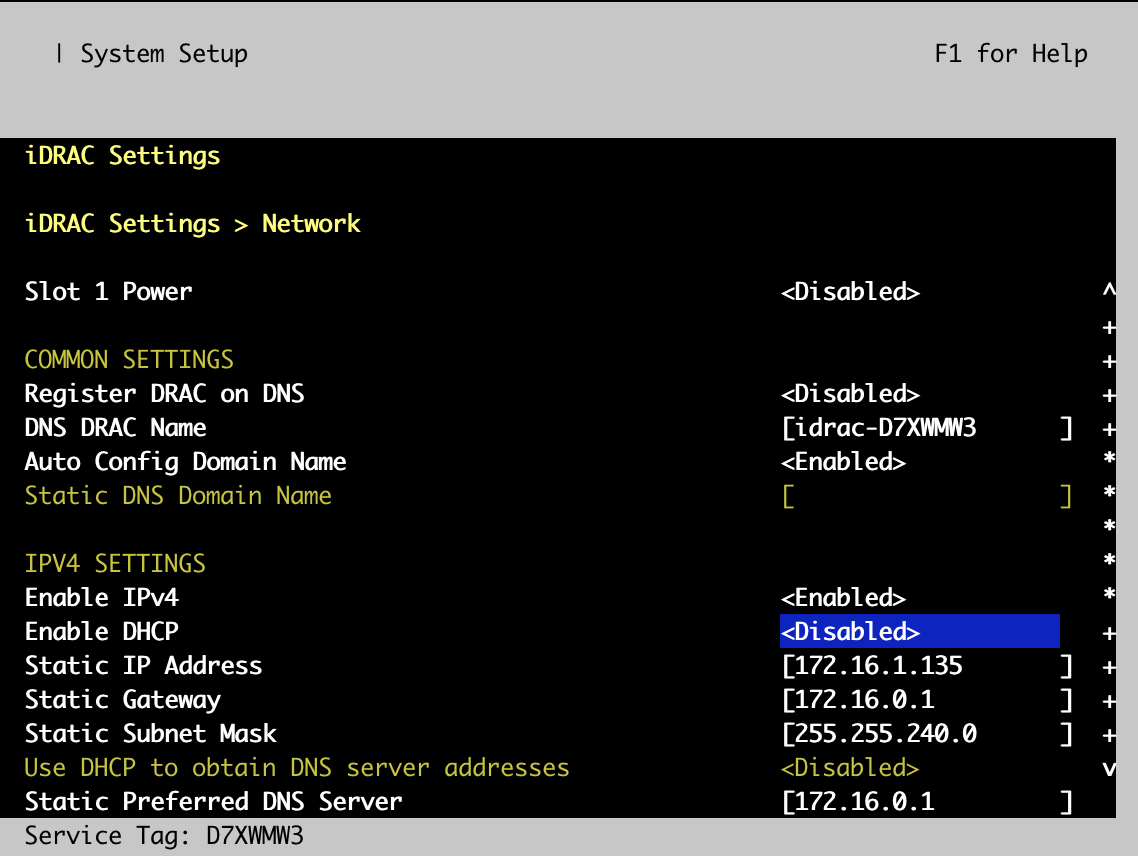
-
Identify the Dell server’s face panel with dual USB ports and plug in Aviatrix OS installer USB disk to the USB port labeled with SS; then browse to iDRAC’s IP address to login to the iDRAC UI with default credentials, which can be found from the Dell service tag label.
Do not reset the root password when prompted to do so. 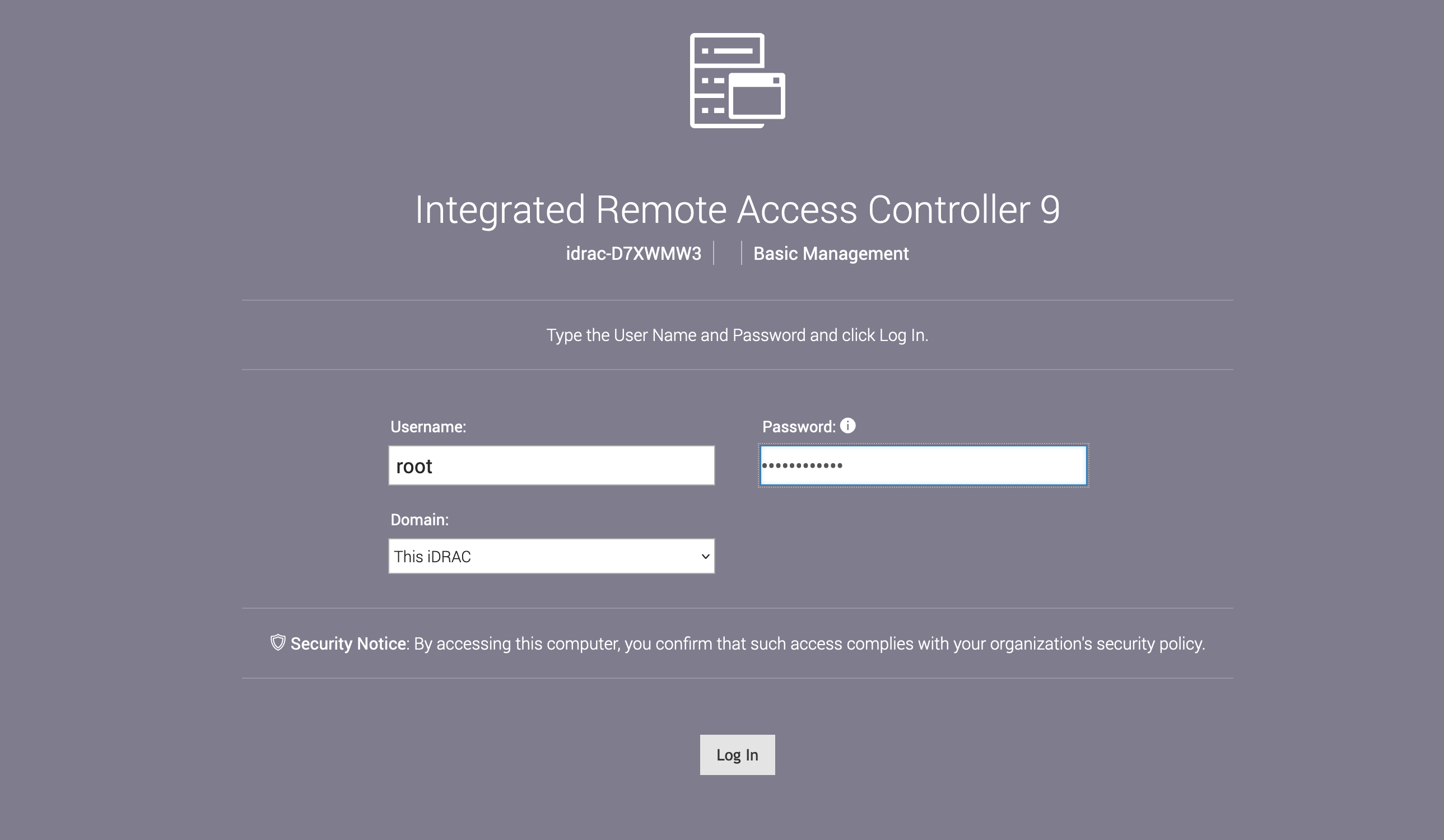
-
After you login to iDRAC UI, go to IDRAC Settings > Users add a default login user account.

-
From iDRAC9 UI Configuration > BIOS Settings, follow Aviatrix’s recommended BIOS configuration in Dell PowerEdge BIOS Configuration.
Apply BIOS setting changes, go to the bottom of the page and click Apply AND Reboot and OK.
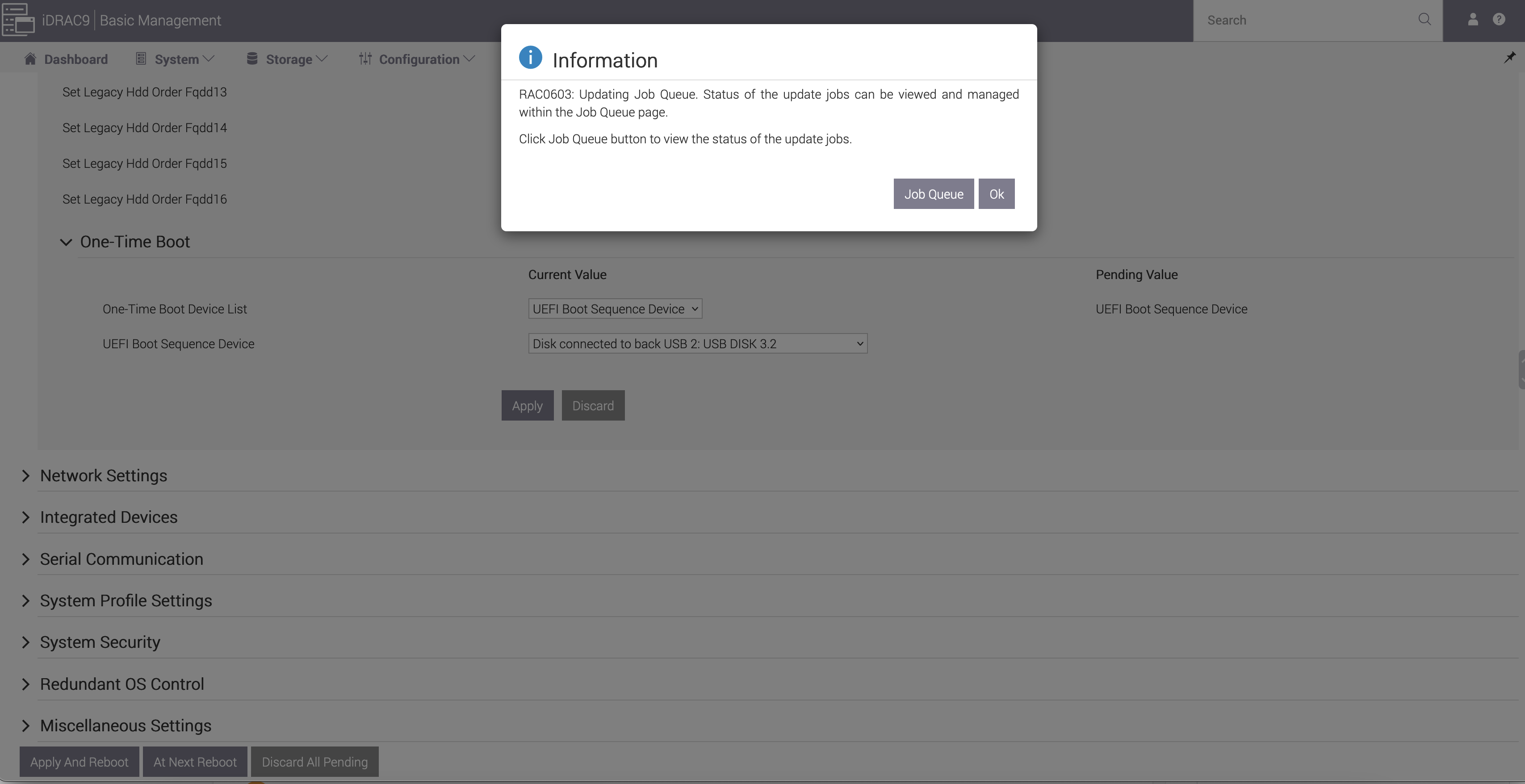
-
Go to Maintenance > Job Queue, you can see current Job queue and task status.

-
Login to iDRAC9 console using SSH.
ssh admin@idrac9_mgmt_ip
and issue the following command to enter Eve device console:
console com2

Wait 5 to 10 minutes until the installation is done and you should see the log below log from iDRAC9 console.

-
Detach the USB installer from the Dell R450 and power it on from Configuration > Power Management, from Power Control dropdown, choose Power On System and click Apply.
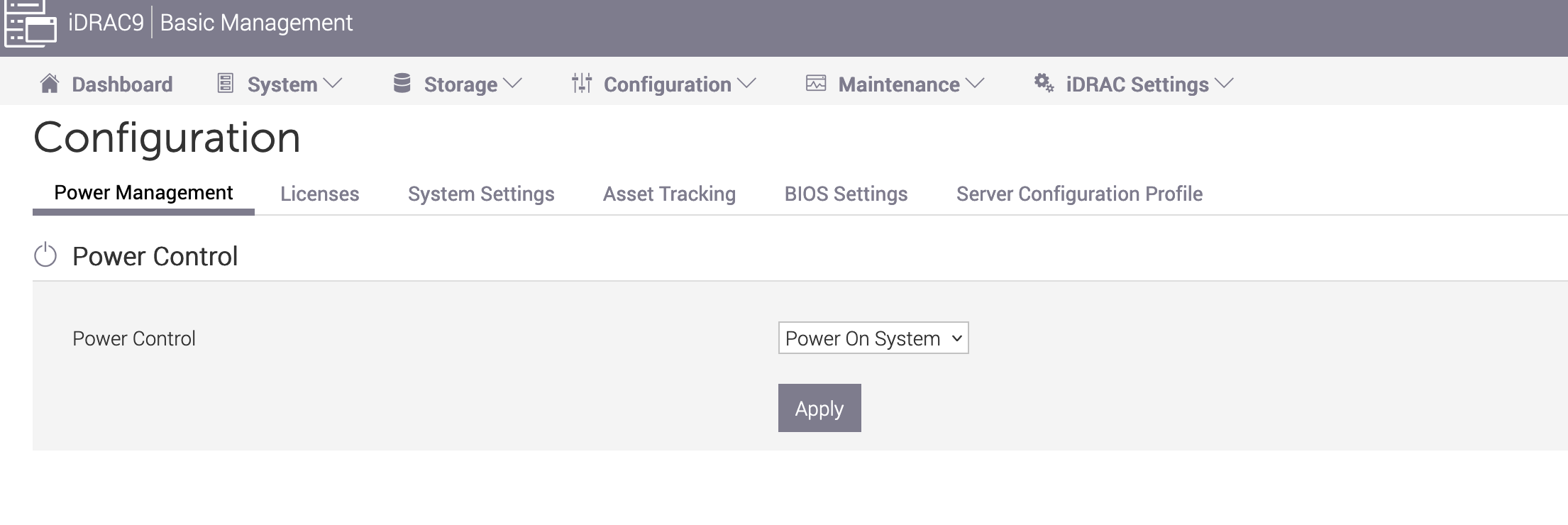
Wait 5 to 10 minutes while Aviatrix OS boots up.
-
The device will power off once the installation is done. At this stage, connect the USB drive which has the static IP information to the device and power on the device. Aviatrix Edge OS will read the static IP information from the USB and configure the device. To view the configuration logs, you can SSH to the device and connect to the serial console.
If you power on the device without inserting the USB drive which has the static IP information, you can do it at a later time. Connect the USB to the device and reset the system (warm boot). Aviatrix Edge OS will read the information from the USB and configure the device. -
After the static IP is configured, the device should be able to dial out to AEP (controller.edge.aviatrix.com) and register with the service. The device should show up as Connected in CoPilot and can now be used to launch an Edge gateway. For details on how to launch an Edge Transit or Edge Spoke Gateway, see Hybrid Cloud Connectivity.
